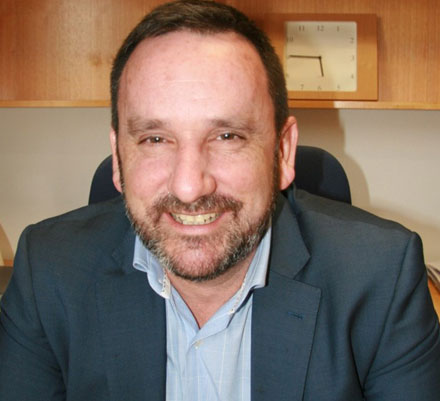
Nathan Trushell
Six Gippsland sawmills have renewed pressure on the Victorian Government, urging Premier Daniel Andrews in an Open Letter to save jobs, protect regional communities and return confidence to the timber industry. Source: Philip Hopkins for Timberbiz
The G6, as the new group calls itself, fears that the six mills are at a competitive disadvantage since the State Government bought into Australian Sustainable Hardwoods mill at Heyfield in Central Gippsland, and VicForests refused to renew their timber contracts past 2021.
VicForests is the state government’s commercial forestry arm.
“Urgent action is needed,” said the G6, which consists of Fenning Timbers (Bairnsdale), Ryan & McNulty (Benalla), Dindi Sawmill (Murrindindi), AG Brown Sawmill (Noojee), Kelly’s Timber (Westburn) and Powelltown Sawmills.
The G6 said the Government’s large stake in the Heyfield mill made it a “competitor with every other timber mill in Victoria”. It urged the Government to reassure the timber industry that it will be “treated equally and given a fair go”.
“Don’t get us wrong. We’re happy for the Heyfield folks.
“We’d be rapt if we were part of the special deals, some adjustment support and the advantages they are getting,” the letter said. They feared the advantage given to Heyfield could drive them into the ground.
Australian Securities Investment Commission records show that the Heyfield mill is owned 51% by management and 49% by the State Government. It is believed the management shareholders will buy the Government’s share over time.
VicForests’ 2016-17 Resource Outlook, released last July, forecast a reduction of 88,000 cubic metres of sawlog quality timber over the 2013 Resource Outlook levels.
VicForests chief executive, Nathan Trushell, said the cut in timber volume was mainly due to increased conservation levels of forest to protect the Leadbeater’s Possum.
Heyfield was the only mill immediately affected by the cut, down from 150,000 m3 to 80,000m3.
“None of our other customers’ supply has or will be impacted by our decision for their current contract term,” he said. “VicForests is honouring its contractual commitments to the best of our ability to all of our customers and any suggestions otherwise is misleading.”
Mr Trushell said contract extensions were potentially available to some customers within their current contracts. Normally, these extensions would have been offered.
“However, there has been a dramatic change in our forward supply profile. We need to manage any decisions around future timber allocation in a fair and reasonable manner to all our customers, including Heyfield,” he said.
“There is no special future deal for the Heyfield mill.”
Mr Trushell said industry understood that the next step down was from 152,000 m3 of ash sawlog to 130,000 m3 by 2020. VicForests was keen to talk with customers on how to resolve the forward allocation “in an equitable and sustainable way for all operators”, he said.
The stand-off comes as the federal and state governments
this month agreed to complete Victoria’s five regional forest agreements (RFAs) by 31 March 2020. The six mills source logs from all eastern RFAs – the Central Highlands, East Gippsland, Gippsland and the North East. RFAs last 20 years and are reviewed every five years.
The recent Fibre and Wood Supply Assessment report by the Victorian Environment Assessment Council found that
Victoria’s sustainable harvest levels had been reduced by more than 50% over the past decade.
In 2009, statewide estimated sustainable harvest levels were 500,000 cubic metres a year for D+ sawlogs. Of these, 293,000 m3 were D+ mountain ash sawlogs.
The 2013 resource outlook forecast 220,000m3 a year of ash sawlogs. VicForests’ current medium term resource outlook is for 132,000m3 a year of D+ ash sawlogs and 100,000m3 per year of mixed species D+ sawlog.
VEAC said bushfires and more discoveries of Leadbeater’s Possum were likely to cut native forest wood supply to Gippsland timber mills by another 25-35% per cent over the next 20 years.
The wood report also found that modelling of climate change impacts predicted that by the end of the century, standing volume and stand density may reduce by 15%.
However, a state government review of the Leadbeater’s Possum surveys argued that changing to forest landscape planning was the best way to manage endangered species. It would also provide greater certainty and reduced costs to industry.
The report recommended reviewing timber harvest exclusion zones around possum colonies and other existing Special Protection Zones (SPZ) in the Central Highlands to optimise the availability of timber availability, and protect the LP, threatened species and other forest values.
After more surveys, the report said the Central Highlands
State forest zoning scheme, including the THEZ, should be reviewed. This would take into account new information and changes in the forest since the LP reserve system was set up in 2008.
Currently, about 450,000 hectares, or 5.7% of Victoria’s native forest, is available for harvest. In 2016-17, VicForests harvested 2965 hectares or 0.038% of the total native forest area.
When the Victorian RFAs were first signed, 955,000 hectares of forest was put into conservation reserves.
The G6 maintains the refusal to allow wood contracts past 2021 also includes a halt to some harvest and haulage contracts to some Gippsland businesses.
Under threat are the sawmills’ clients, their 200 employees and the 700 jobs down the line that they support.





